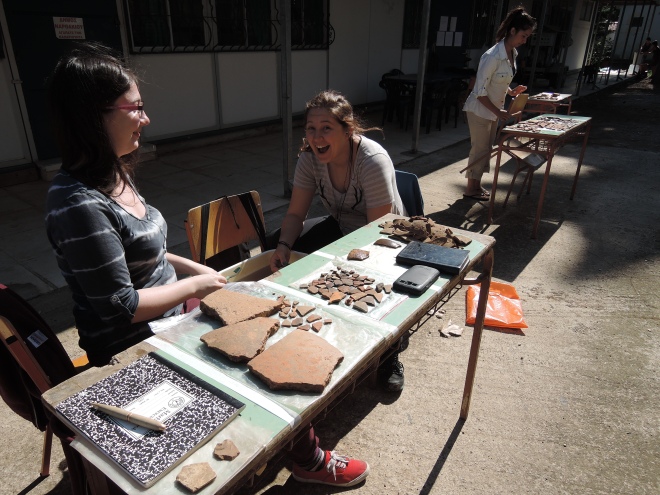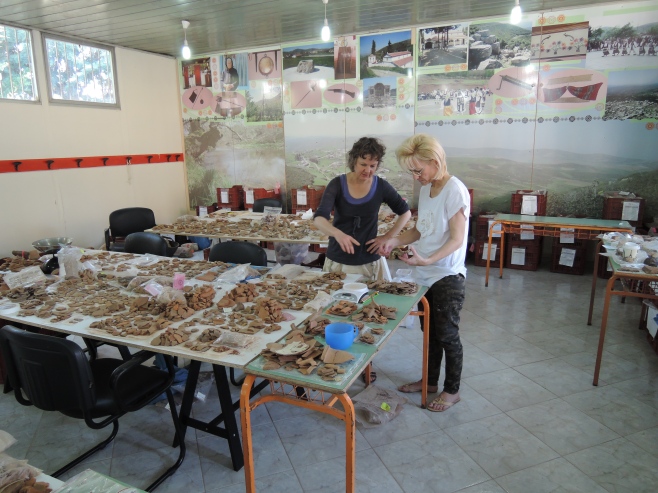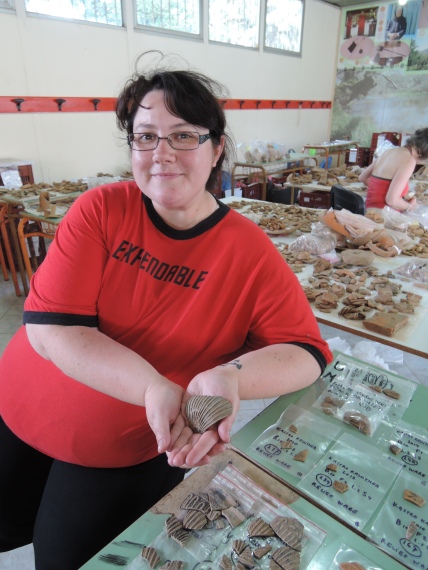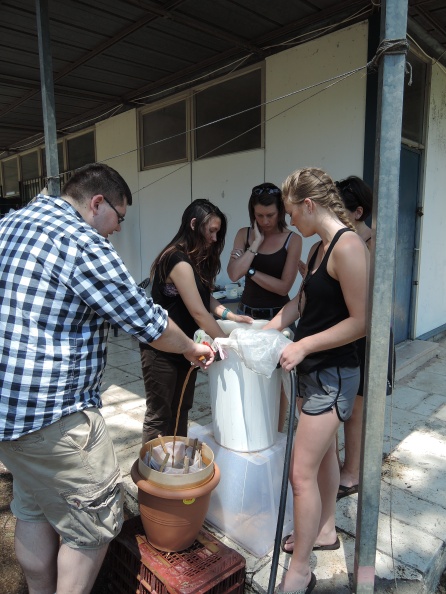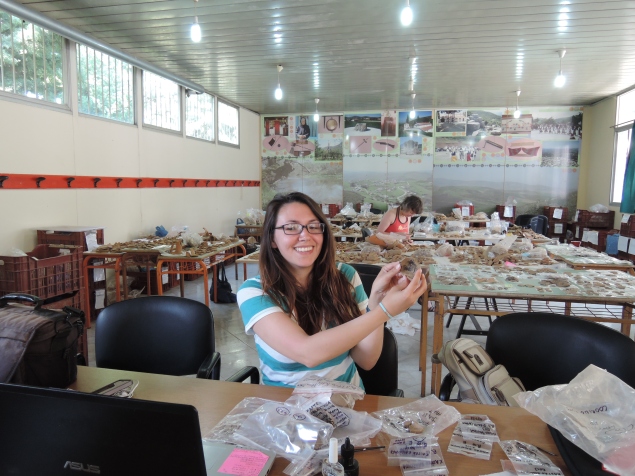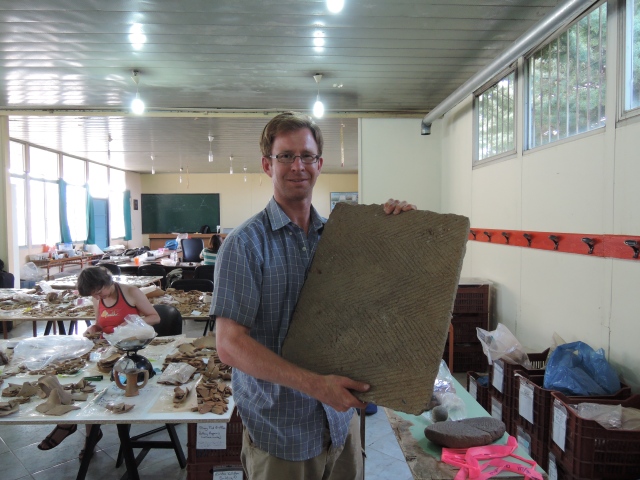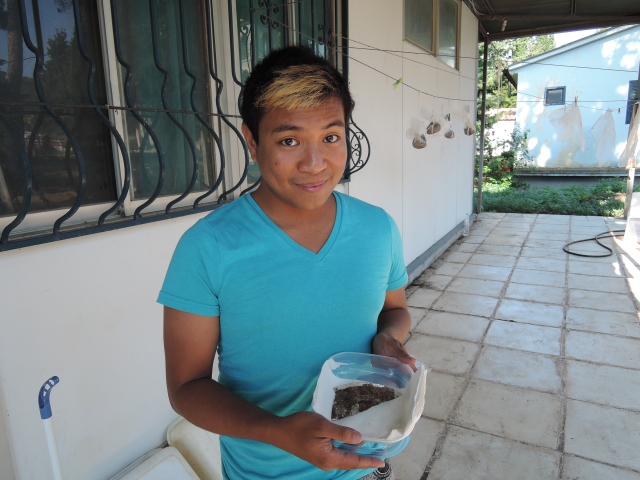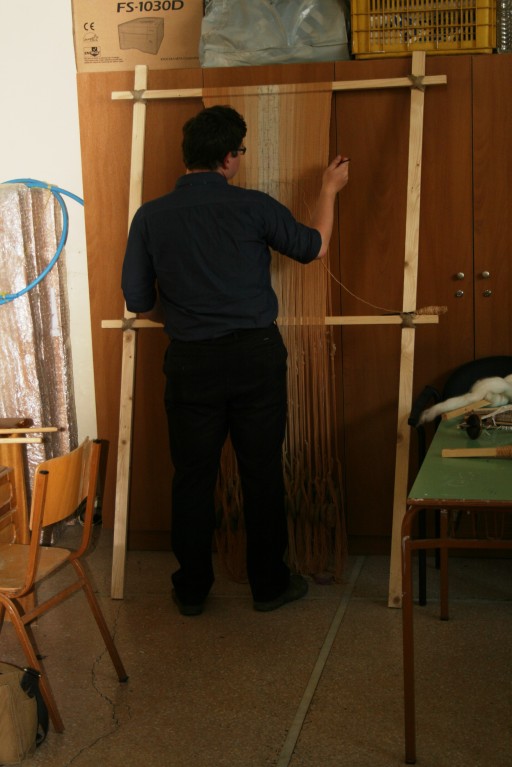We started early this year. Arriving from wintery Edmonton, where snow and frost was still in the air, our first group made its way to Thessaly in early May. Welcomed by the heartwarming greetings of the inhabitants of Narthaki in Thessaly, we settled in and were quickly able to collect our finds, which were in storage in Pharsala and Larissa throughout the year. Goal for this season was to finish processing the ceramics and to lay out sherds by room, find fits, determine shapes and dates and quantify all ceramic finds of at least three units from Building 10, a large domestic structure our team excavated over the past five years.
Washing and labeling all the finds that were discovered in Building 10 is a large job that needs lots of time and lots of hands. All of us worked tirelessly to wash the ceramics which make up at least 90% or more of our finds. Subsequently, the finds needed to be labelled by hand with ink and small pens so that they do not get mixed up and their precise find location will always be known.
The picture above gives an impression of our work space in Narthaki and the sheer quantity of ceramic finds found in Building 10. The three tables are only filled with sherds from one room of Building 10. Colette Beestman-Kruyshaar, our Hellenistic ceramics specialist who overlooks all ceramic studies and undersigned worked hard on sorting and quantifying all the material by shape and ware. Sophia Karapanou, with whom we conduct the project, gave us excellent feedback.
Amber Latimer, is chief find administrator, a laborious task which she fulfils with incredible dedication. Progress was also made with her other project: the publication of the mould-made pottery. Many interesting pieces have been found and what strikes us is that many items were decorated with figurative scenes including various Thessalian myths, such as those of Jason being devoured by a ‘drakon’ and the story of Sisyphos and Autolykos.
Over the years, we gathered a large number of soil samples in order to study possible burnt organic remains that were left behind in storage containers or on the floors. This year, we wet-sieved the soil and used flotation to separate the organic remains. This was done under the direction of Laura Surtees, our field director for many years. In the coming months CIG fellow Lana Radloff will be sorting the residues.
Several students have been working on particular sets of materials during this study season. Karey Rodgirs, made strides in her study of cooking pots found at Building 10, while Edward Middleton studied lamps and lighting. Various terracotta figurines were found in Building 10 as well and Elina Salminen is trying to put them together as they were found broken in many pieces.
Tristan Ellenberger documents the stone finds. They consist of a large variety of items, including grinding and rubbing stones, sculpture as well as marble pieces belonging to a louterion.
Very few glass items were found in Building 10; most of them belonging to the upper layers of the excavation. They will be studied by Gino Canlas. He already found out that at least one item, a large wide open bowl decorated with long flower petals must have belonged to the habitation phase of building 10. This unusual piece may have parallels in Italy. Shaun McKinnon studied the plaster found in Building 10 and made a reconstruction of the possible wall decoration in Building 10, while Lorraine Stratkotter took water samples of the springs near Kallithea for analysis. Myles Chykerda prepared the publication of the civic architecture of the site. We very much enjoyed the visit of Chris Stewart, who photographed a large number of finds for us.
A remarkable high number (230) loomweights were found in Building 10. These weights were used to weigh down the warps of an upright loom. Wool and textile production must have added to the wealth of the household living in Building 10 and we assume that, just like in present day communities, wool and textiles may have been sold as surplus to buy other commodities.
These past few weeks our student John Manderscheid worked tirelessly on a textile project he had proposed as part of his course fulfillment for CLASS 601/602. John started off with dyeing the wool he obtained according to procedures written down in the ancient records with which he used natural dyes that must have been known in this part of Thessaly: cochineal dye derived from small insects living on Kermes oak and dye obtained from a root known from Meliboia, which produced the famed Meliboian red. These dyes produced an excellent imitation of the far more expensive royal purple, created with murex shellfish. He also used onion peels which produce a rich golden brown.
As an archaeological experiment, John subsequently constructed a simple warp weighted loom using the ancient loom weights found in Building 10. The finished loom (with weft) was presented to the Municipality of Pharsala on June 18th 2014 during a festive occasion in which the Kallithea project directors, Sophia Karapanou and undersigned gave a lecture while the school children of Pharsala performed book 19, lines 136-156 of Homer’s Odyssey in the translation of the well-known Greek poet Katerina Aghelaki-Rooke. The loom will be displayed in the permanent exhibition on Kallithea in the cultural centre of Pharsala. John’s experimental loom project will be featured more extensively on the Kastro Kallithea website: www.greekarchaeology.org.
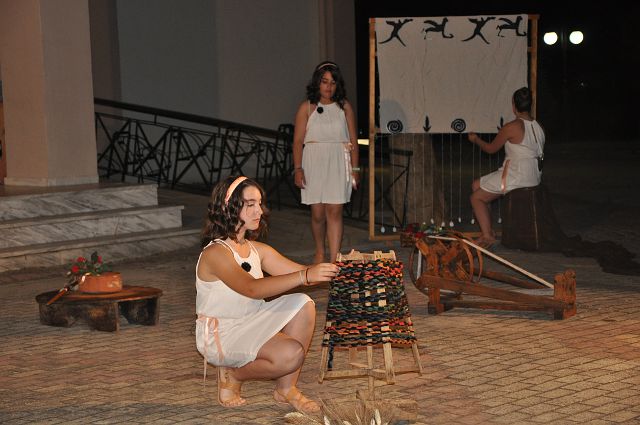
Pharsala’s school children performing Book 19, lines 136-156 of Homer’s Odyssey in the translation of Katerina Anghelaki-Rooke
Given the quantity of materials, our work on Building 10 has not yet come to an end. On the contrary, we are only beginning to understand the life and life styles of the inhabitants of Building 10 and we will be back in the next few years to finalize our work on the fascinating community which once lived at the Kastro of Kallithea.
We welcome new students in this endeavour and will organize another field school in 2015. Application forms will be up in October this year. Be quick! The field school often fills up fast!
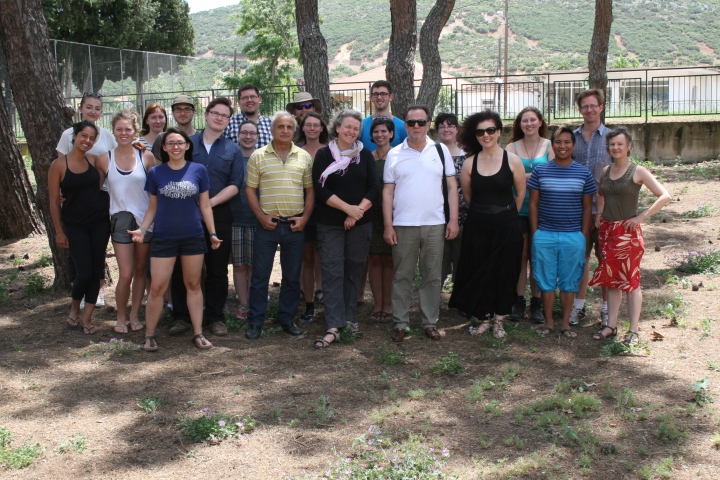
The group posing with Aris Karachalios, the mayor of Pharsala and Vasso Noula-Karpeti, municipal archaeologist

